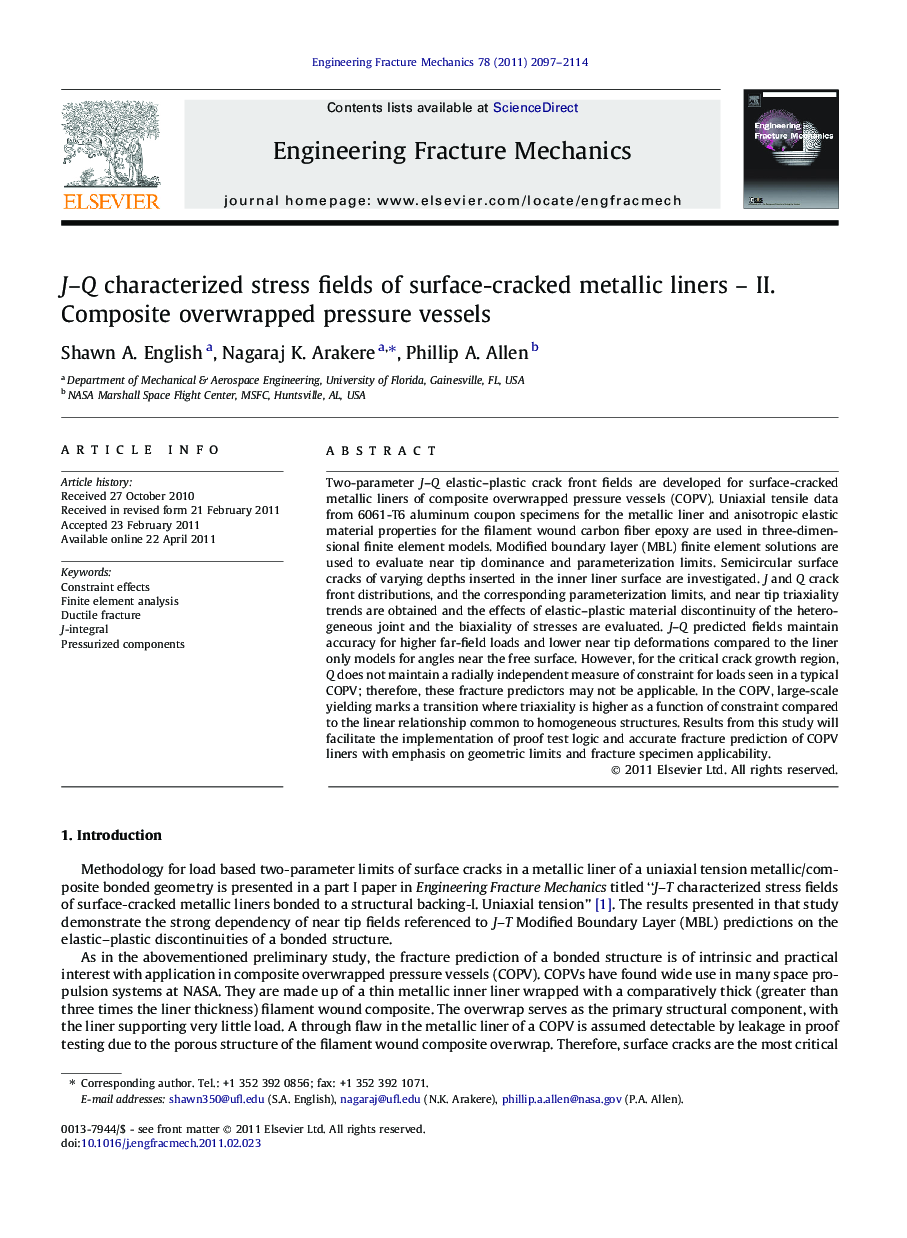| Article ID | Journal | Published Year | Pages | File Type |
|---|---|---|---|---|
| 767677 | Engineering Fracture Mechanics | 2011 | 18 Pages |
Two-parameter J–Q elastic–plastic crack front fields are developed for surface-cracked metallic liners of composite overwrapped pressure vessels (COPV). Uniaxial tensile data from 6061-T6 aluminum coupon specimens for the metallic liner and anisotropic elastic material properties for the filament wound carbon fiber epoxy are used in three-dimensional finite element models. Modified boundary layer (MBL) finite element solutions are used to evaluate near tip dominance and parameterization limits. Semicircular surface cracks of varying depths inserted in the inner liner surface are investigated. J and Q crack front distributions, and the corresponding parameterization limits, and near tip triaxiality trends are obtained and the effects of elastic–plastic material discontinuity of the heterogeneous joint and the biaxiality of stresses are evaluated. J–Q predicted fields maintain accuracy for higher far-field loads and lower near tip deformations compared to the liner only models for angles near the free surface. However, for the critical crack growth region, Q does not maintain a radially independent measure of constraint for loads seen in a typical COPV; therefore, these fracture predictors may not be applicable. In the COPV, large-scale yielding marks a transition where triaxiality is higher as a function of constraint compared to the linear relationship common to homogeneous structures. Results from this study will facilitate the implementation of proof test logic and accurate fracture prediction of COPV liners with emphasis on geometric limits and fracture specimen applicability.
